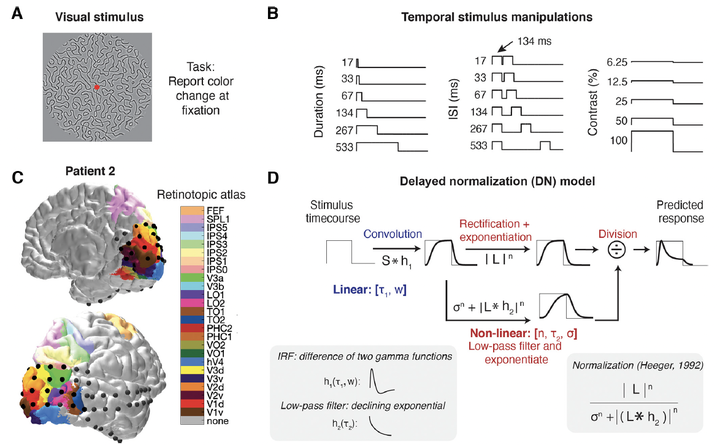
Abstract
Neural responses to visual stimuli exhibit complex temporal dynamics, including subadditive temporal summation, response reduc-tion with repeated or sustained stimuli (adaptation), and slower dynamics at low contrast. These phenomena are often studied in-dependently. Here, we demonstrate these phenomena within the same experiment and model the underlying neural computations with a single computational model. We extracted time-varying responses from electrocorticographic recordings from patients pre-sented with stimuli that varied in duration, interstimulus interval (ISI) and contrast. Aggregating data across patients from both sexes yielded 98 electrodes with robust visual responses, covering both earlier (V1–V3) and higher-order (V3a/b, LO, TO, IPS) reti-notopic maps. In all regions, the temporal dynamics of neural responses exhibit several nonlinear features. Peak response ampli-tude saturates with high contrast and longer stimulus durations, the response to a second stimulus is suppressed for short ISIs and recovers for longer ISIs, and response latency decreases with increasing contrast. These features are accurately captured by a computational model composed of a small set of canonical neuronal operations, that is, linear filtering, rectification, exponentia-tion, and a delayed divisive normalization. We find that an increased normalization term captures both contrast- and adaptation-related response reductions, suggesting potentially shared underlying mechanisms. We additionally demonstrate both changes and invariance in temporal response dynamics between earlier and higher-order visual areas. Together, our results reveal the presence of a wide range of temporal and contrast-dependent neuronal dynamics in the human visual cortex and demonstrate that a simple model captures these dynamics at millisecond resolution.